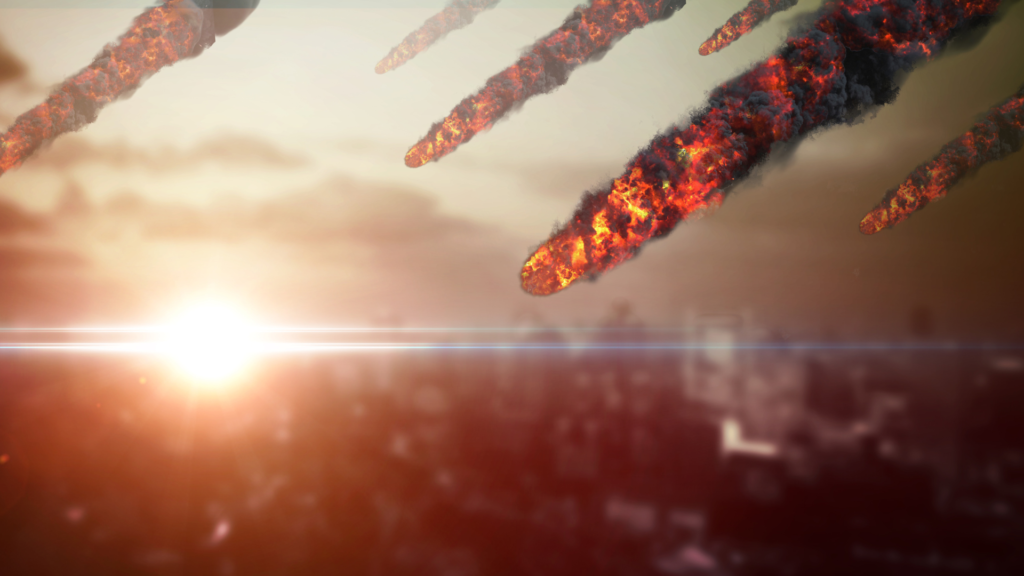There is Neutrinos from a galaxy about 47 million light years away from earth and in its center is supermassive Black hole. The conditions are very dense there, so dense that even light has some difficulty coming out. But the small particle called Neutrinos can very easily pass through it. There were hundreds of millions of Neutrinos but out of them only 80 Neutrinos were discovered below the continent, Antarctica through a telescope.
What are Neutrinos?
Light has much importance in astronomy. When we talk about stars and our sun and other galaxies, all the information we get about them is through light. We have received the samples of somethings such as our moon or mars on asteroids and comets and we can analyse them directly. But beside that if you seek information of some other thing, for that you need light. But some objects in our universe, decides light, can also give information in some other way. One example among them in sub-atomic particles which are called Neutrinos.
Detect Existence of Neutrinos
The existence of these Neutrinos was predicted in 1930 century, and then were detected for the first time in 1950 century.
These Neutrinos belong to the electron family and their mass is very little. For some time, it was assumed they are massless but now we know they have very little mass, and they travel at about the speed of light. One problem is it is very difficult to stop these Neutrinos. They easily passed through everything. Even if you put a planet in between the past through it as if not planet was present there.
How to made Neutrinos and Its Uses
The numbers of these Neutrinos is so huge that pleasantly trillions of Neutrinos are passing through your body. Now many things make these Neutrinos. Many Neutrinos were made after the Big Bang. But Neutrinos I also made in radioactive decay.

The nuclear fusion in our sun (which makes the fuel in our sun), many Neutrinos made in that also. And then in our earth’s atmosphere, charged particles called cosmic rays (they are called basically protons, etc) which are made in the universe and collide with some atoms in our atmosphere, neutrinos are also made due to this reaction.
Neutrinos are made with these Causes
- It made after Big Bang.
- It made after nuclear fusion in stars.
- It made after Galaxies Collided.
- It made from atoms in our atmosphere.
- It made in the conditions of the supermassive black hole.
- It made also in the conditions of supernova explosions.
Supernova 1987A
The famous supernova, 1987A which happened in 1987 in large Magellanic clouds (which is the nearby satellite galaxy)
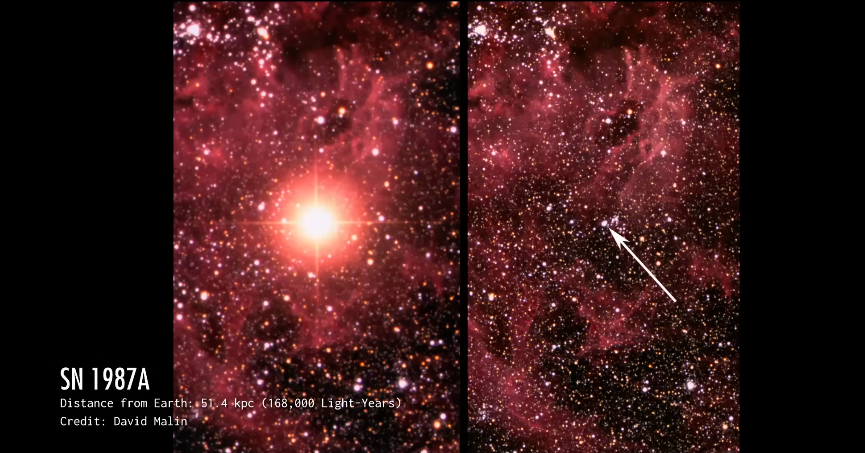
We had detected about 20 Neutrinos from there before seeing explosion. It was confirmed afterward that the information of Neutrinos had come before and light of the explosion came afterwards. These can inform us about extreme condition also
How do we catch them?
They are detected with much difficulty. Actually, one where is related to the probability. There is one in 100 chance of something collided. This means you have to produce 100 opportunities. From them, it will collide once.
Now the probability of collisions of these Neutrinos is very very very less.
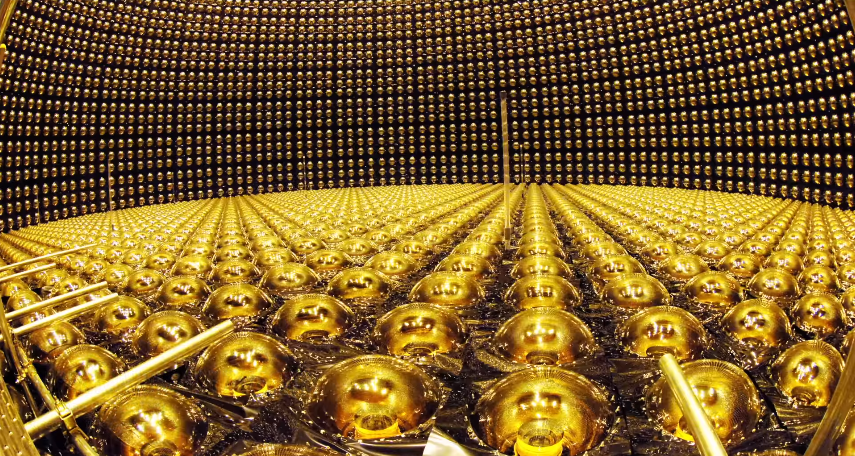
You have to create enough opportunities according to that.
Scientists have creatively made these type of detectors. In this far example, there are many molecules or atoms of water. If you have a probability of one in a billion and you have billion atoms you will be able to detect one collision in them.
Observatory in Antarctica
Now on this principle is a very remarkable Observatory named “Ice Cube Neutrino Observatory”. This Observatory is in Antarctica on the south pole below the ice. This Observatory was constructed between 2005 and 2011. Normally it is assumed that in Observatory, there will be a telescope a big mirror etc etc. But this is not a type of this Observatory.

Rather in this Ice Cube neutrino Observatory scientists dug 86 holes in the ice. Every hole is 2 feet wide and 2 1/2 km deep in the ice. They hanged a string (cable) in every hole and fixed about 60 detectors on every spring and every detector is the size of a basketball meaning that the Observatory below the ice has more than 5000 detectors, and if you calculate eight area it is one cubic kilometer. This means this detectors are present under one cubic kilometer of an ice block.
This one cubic kilometer Observatory (in a sense), was installed because of the collaboration of 41 institutions and its aim is to detect Neutrinos at different places in the universe.
How these Neutrinos Detected?
Occasionally from these Neutrinos some go and collide with the neutrons and protons present in the ice and after this collision, another subatomic particles named muon is produced. This muon when travels in ice and at a fast pace, bluish glow is produced in it. And this detector detect this glow. And because this whole detector is in the ice no other light reaches it except this bluish glow. This way detectors come to know there was a neutrino because of whose collision this muon was produced and because of that muon, they detected this bluish glow.
They can find out from which direction muon and its original neutrino had come and it can tell us about its energies also. By the way, if you want to know the technical name of that in fraction of neutrino, which produce this muon, this is called Cherenkov radiation.
Now scientists have started to find out there are several thousand neutrinos which have from deep space this neutrino detector. Now they are coming from all directions.
Neutrino detect from TSX 0506+56 Galaxy
One neutrino was detected in 2018 there is one specific active galaxy active galaxy means much activity is taking place in its central region where the supermassive Black hole is present or a lot of material is going into it and a lot of radiation is coming out from the center of the galaxy. This is an active galaxy name is TSX 0506+56. No need to remember the name.
This Ice Cube detector has discovered one surge neutrino whose direction has been traced from this galaxy. As soon as this was detected astronomers immediately issued an alert that a special type of neutrino has been detected and after the astronomers also saw gamma rays coming out of this galaxy. This galaxy is approximately 5 billion light years away from us.
This was the first time that not only detected a neutrino which had come from far of identified its source (this far off galaxy) also.
80 Neutrinos detected from NGC 1068 Galaxy.
Recently another paper has been published about neutrino and they have identified about 80 neutrinos from another galaxy named NGC 1068. It has another name Messier, this is a famous galaxy named Messier 77 (M-77). This is relatively near to us at a distance of 47 million light years.
Its central region where the supermassive Black hole is located (This is four times bigger than that supermassive Black hole of our galaxy). Almost 15,000,000 solar masses. It is 15 million times larger (mass-wise) than our sun.
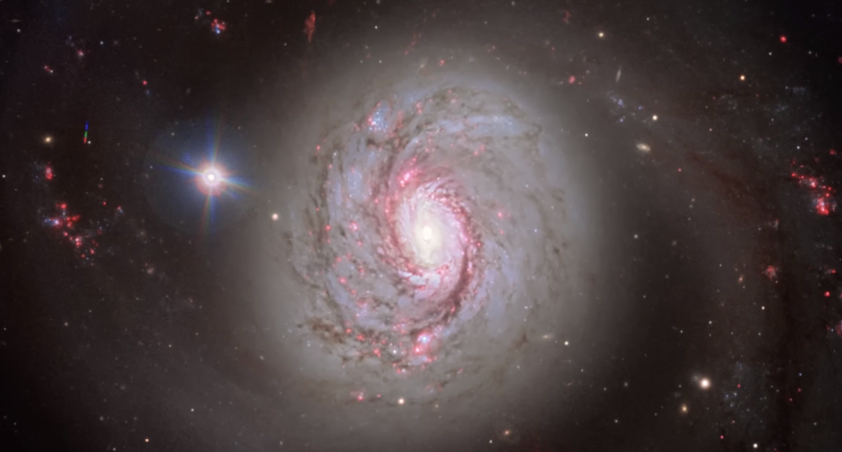
No near the supermassive Black hole at the centre of 1068 there is a lot of material present. It is so dense that we cannot see even light over there. But these neutrinos, as I said, can easily come out from there. There is a jet near the supermassive Black hole which is at the centre of this galaxy and these neutrinos are being produced through that jet. This jet is accelerating the protons over there and after its reaction, a lot of neutrinos are being produced.
Out of these 80 neutrinos were detected by this ice cube detector and we know its direction was towards NGC 1068. So, we can say these 80 neutrinos were produced by this galaxy. The study of these neutrinos can tell us what is happening in the jet near this supermassive Black hole.
Cosmic Neutrino Background
Astronomers are trying to find out one other thing also which is called “Cosmic Neutrino Background” or “Cosmic New Background”
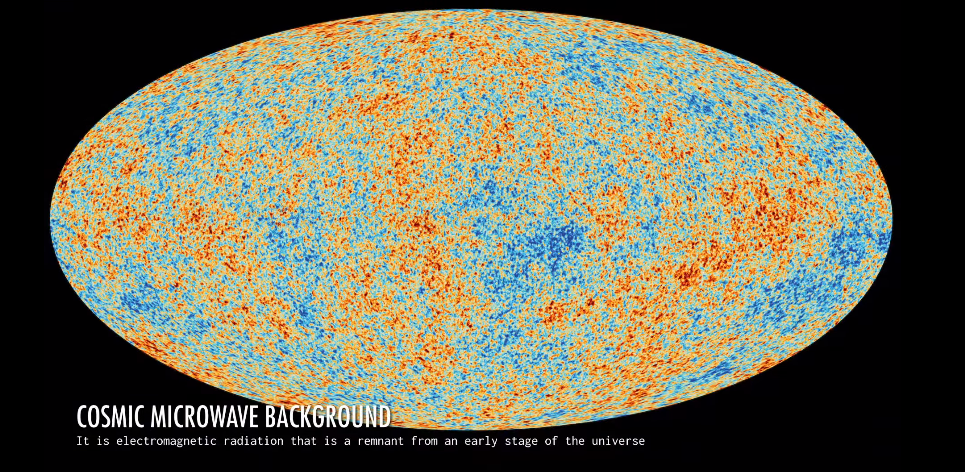
This is a leftover light of the big bang after 400,000 years of the big bang. In a way, very big evidence of the Big Bang is the detection of the background radiation because this was one of its predictions. If you want to see your animals behind or in the past night, these photos, take you to about 400,000 years after the Big Bang and before that our universe is opaque.
The word use by astronomers is light and matter before that was ‘coupled’ so to see before that is very difficult. But these neutrons, which can come out of matter very easily, its prediction is also that there is a cosmic neutrino background.
These neutrinos are the ones which were produced in the Big Bang are at the beginning of our universe. And if we can find out this neutrino background this will give us information of conditions one second after the Big Bang.
Imagine via light we can go (in the past) up to a maximum of 400,000 years after the Big Bang but if we discover the cosmic neutrino background it will tell us such conditions (we have theoretical models of what was happening at the beginning of our universe) but this will be able to tell us direct observational things that what was happening in our universe 1 seconds after the Big Bang.
The problem is, it is very difficult to find out the neutrinos of this cosmic neutrino background and this Ice Cube neutrino director is not capable of detecting this type of low energy neutrinos. But eventually according to neutrino Astronomy, it is hoped that scientists will make this type of detectors that eventually we are able to detect this cosmic neutrino background also.
